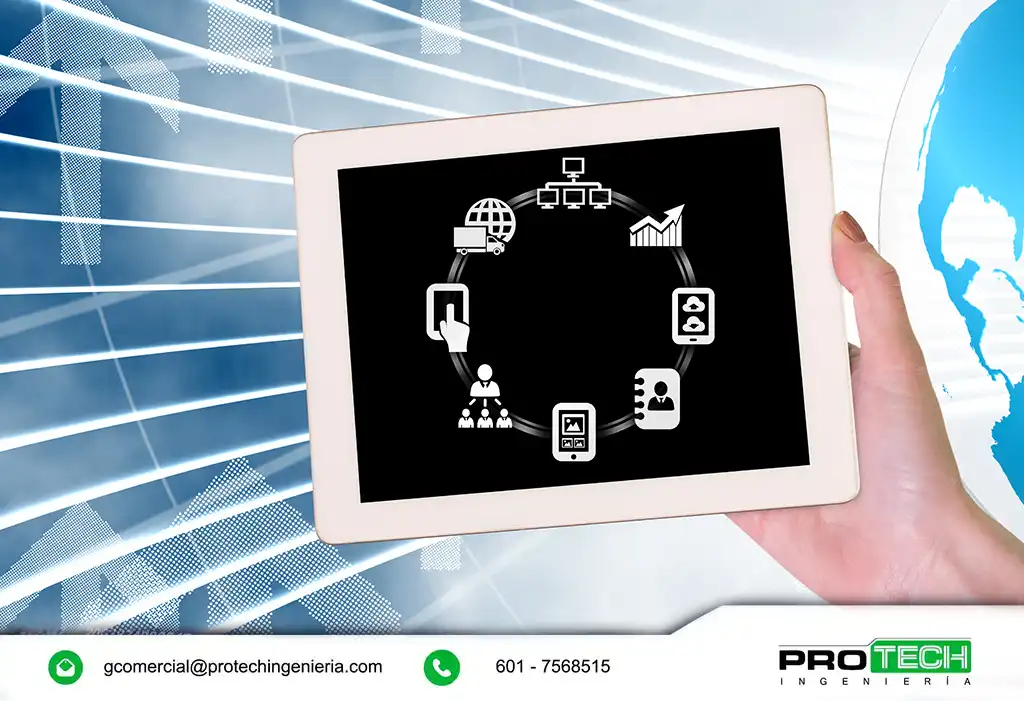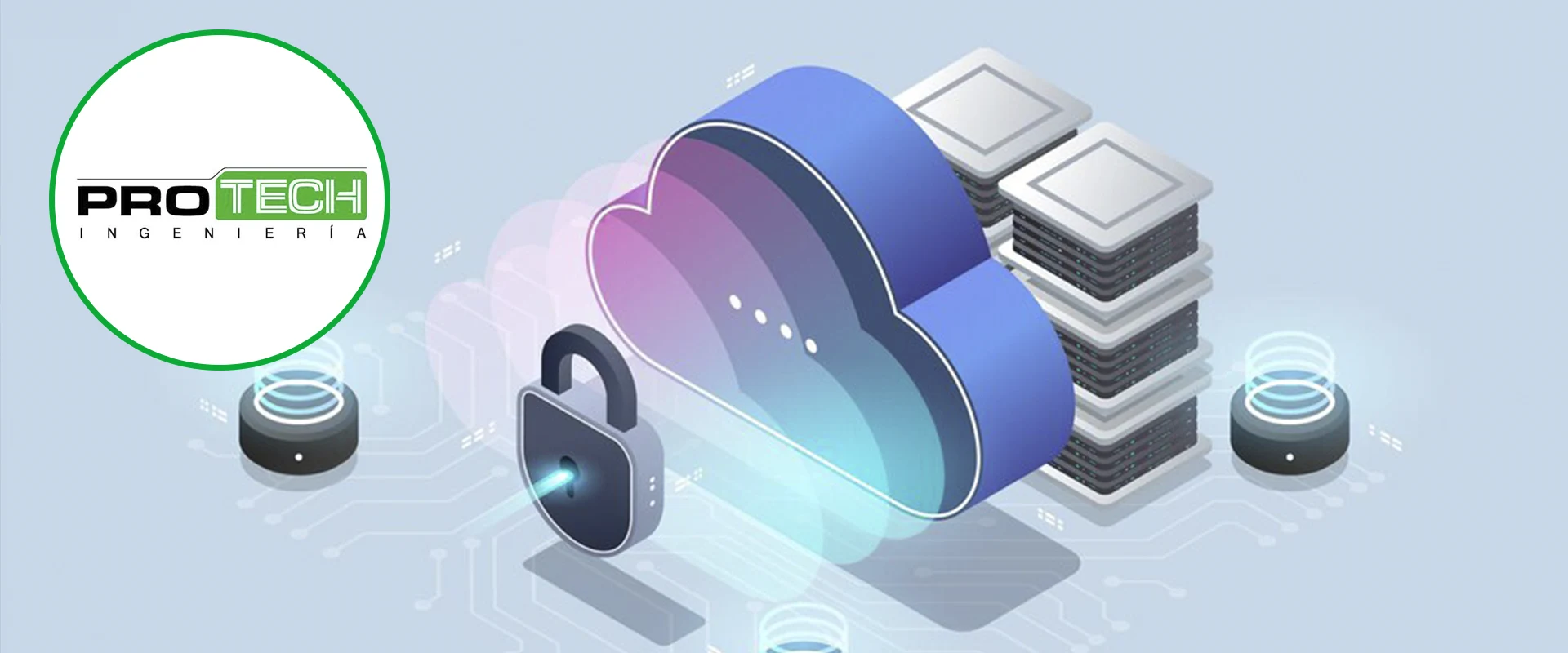In the era of digital transformation, the future of document management is emerging as one of the key pillars for organizational success. Companies across all sectors are experiencing unprecedented growth in the volume of information they handle daily, making effective document management a strategic necessity rather than just an administrative function.
Document management has come a long way from physical file cabinets to the sophisticated digital systems of today. However, we are on the threshold of a new revolution in this field. The future of document management will be shaped by emerging technologies that promise to radically transform the way organizations capture, process, store, retrieve, and share information.
Sure! Here's the English translation:
---
This article explores the most significant trends that will shape the future of document management over the next five (5) years, analyzing how disruptive technologies such as artificial intelligence, blockchain, the Internet of Things (IoT), cloud computing, and new privacy regulations will redefine corporate document ecosystems. We will also examine the challenges organizations will face during this transition and provide practical recommendations to prepare effectively.
Historical Evolution and Current State of Document Management
From Physical Archives to Digital Systems
Document management has its roots in ancient practices of preserving and organizing information. From the historic libraries of Alexandria to the meticulous filing systems of the 20th century, humanity has always sought efficient methods to manage its documents. However, it was the advent of computing in the second half of the 20th century that marked a turning point in this discipline.
The first electronic document management systems emerged in the 1980s, offering basic storage and retrieval functionalities. The 1990s saw the arrival of Enterprise Content Management (ECM) systems, which expanded the scope to include the entire document lifecycle.
Con la llegada del nuevo milenio, la gestión documental se integró con otras herramientas empresariales como ERP, CRM y plataformas colaborativas, sentando las bases para el futuro de la gestión documental que hoy comenzamos a vislumbrar.
Current Landscape
Today, document management systems have evolved into comprehensive platforms that combine capabilities for capturing, processing, storing, searching, and distributing information. Modern solutions offer:
- Advanced digitization with Optical Character Recognition (OCR)
- Structured metadata for classification and search
- Automated workflows
- Version Control
- Collaboration tools
- Mobile access
- Integration with business applications
- Basic regulatory compliance
However, despite these advances, many organizations continue to face significant challenges in their document management practices. According to recent studies, over 60% of companies believe that their current system does not fully meet their needs, and approximately 40% admit that between 30–40% of their document-related processes are still predominantly manual.
Key Current Challenges
Organizations face several obstacles that the future of document management must address:
-
1. Information Overload
The volume of data is growing exponentially, making efficient processing increasingly difficult.
-
2. Information Silos
Documents are often scattered across different repositories without a unified view.
-
3. Technological Integration
The need to connect various systems and platforms remains a major challenge.
-
4. Search and Retrieval
Regularly evaluating the document management system helps identify and correct issues before they impact business operations.
-
5. Regulatory Compliance
Ever-stricter regulations complicate document management processes.
-
6. Security
Constantly evolving cyber threats put sensitive information at risk.
-
7. Adapting to Remote Work
The pandemic has accelerated the need for secure access from anywhere.
These challenges are driving innovation and laying the foundation for the future of document management, which promises revolutionary solutions to these issues.

Trend 1: Artificial Intelligence and Automation
Artificial Intelligence (AI) represents perhaps the most significant shift shaping the future of document management. This technology promises to radically transform every aspect of the document lifecycle—from capture to archiving and eventual disposal.
Advancements in this field are so substantial that institutions like AIIM are dedicating significant resources to its analysis and research. According to experts at AIIM (Association for Intelligent Information Management), AI is not only changing how we manage documents, but is also completely redefining the very concept of information management. Source: AIIM, “AI and Information Management – Preparing for the Global Summit,” available at: https://info.aiim.org/aiim-blog/ai-and-information-management-preparing-for-the-global-summit
Automated Document Classification
Traditional document management systems have required users to manually classify documents or, at best, have relied on predefined rules for automatic categorization. However, the future of document management will be marked by AI-powered systems capable of:
- Automatically identifying document types (invoices, contracts, forms, correspondence, etc.)
- Extracting contextual information to generate accurate metadata
- Continuously learning from user interactions to improve accuracy
- Recognizing complex patterns that predefined rules cannot detect
- Classifying documents within complex enterprise taxonomies
This capability will drastically reduce human errors in classification, which—according to current studies—affect approximately 30% of documents in enterprise systems.
Intelligent Data Extraction
Natural Language Processing (NLP) and deep learning are revolutionizing the extraction of information from unstructured documents. In the future of document management, intelligent extraction capabilities will include:
- Contextual understanding of document content
- Accurate identification of entities such as names, locations, dates, and figures
- Extraction of relationships between entities (who did what, when, and where)
- Sentiment and tone analysis in communications
- Interpretation of multimodal documents combining text, tables, and images
- Conversion of implicit information into explicit, actionable data
Pioneering companies that have implemented these technologies report up to an 80% reduction in document processing time and a 60% improvement in data extraction accuracy.
Virtual Assistants for Document Management
Chatbots and virtual assistants are rapidly evolving, and in the future of document management, they will play a crucial role as the primary interface for many users. These assistants will enable:
- Natural language searches (“Show me all contracts expiring this quarter”)
- Responses based on document analysis (“Total marketing expenses last year were X”)
- Proactive recommendations (“You should review this document that requires your approval”)
- Automation of routine tasks (“Archive all emails related to project X”)
- User onboarding and contextual training
Gartner predicts that by 2026, over 70% of interactions with document management systems will occur through conversational interfaces, significantly reducing the learning curve and increasing productivity.
Cognitive Automation of Document Processes
Más allá de tareas específicas, el futuro de la gestión documental promete la automatización integral de flujos de trabajo documentales completos. La automatización cognitiva de procesos (CPA) combinará:
- Document recognition through computer vision
- Context understanding via Natural Language Processing (NLP)
- Decision-making based on learned business rules
- Execution of actions across multiple enterprise systems
This will enable the automation of complex document-driven processes such as loan approvals, insurance claims management, or hiring procedures—reducing processing cycles from days to minutes and limiting human intervention to exceptional cases.
Is Your Organization Ready for the AI Revolution in Document Management?
Request your free digital maturity assessment today and discover how artificial intelligence can transform your document processes—reducing processing time by up to 80% and improving data accuracy by 60%.

Trend 2: Blockchain and Document Security
Blockchain technology is set to revolutionize key aspects of the future of document management, particularly in relation to the authenticity, integrity, and traceability of information. This distributed ledger technology offers intrinsic features that solve traditional problems in document management.
Document Authenticity Verification
Document forgery and manipulation remain ongoing challenges for organizations. In the future of document management, blockchain will provide:
- Cryptographic proof of authenticity through unique document hashes
- Immutable timestamps verifying when a document was created or modified
- Certification of origin confirming who generated the document
- Verification of advanced digital signatures
- Authentication methods that do not rely on centralized authorities
These mechanisms will allow any party to instantly verify the authenticity of a document without relying on third parties—significantly reducing the risk of document fraud, which currently costs global businesses over $3.7 trillion annually, according to estimates from the Association of Certified Fraud Examiners.
Immutable Traceability
The future of document management will be defined by the ability to track every interaction with a document in an immutable way. Blockchain technology will enable:
- Permanent logs of every document view, modification, or sharing event
- Complete audit trails of the document custody chain
- Verification of who accessed sensitive information and when
- Proof of delivery and receipt of critical documents
- Full traceability of the document lifecycle—from creation to deletion
Highly regulated industries such as pharmaceuticals, finance, and law are already exploring these capabilities to ensure regulatory compliance and enhance document governance.
Smart Contracts
Smart contracts—self-executing programs triggered when predefined conditions are met—will transform the future of document management in relation to agreements and contractual obligations:
- Automation of contract clauses based on verifiable events
- Automatic execution of payments upon completion of documented milestones
- Role- and condition-based access control to documents
- Programmed expiration of temporary documents
- Automatic updates of interdependent documents
A Deloitte study estimates that the implementation of smart contracts could reduce administrative and legal costs associated with contract management by 50–60%, while significantly decreasing disputes arising from ambiguities or breaches.
Tokenization of Document-Based Assets
An innovative aspect that will influence the future of document management is the ability to tokenize documents that represent assets. This practice will enable:
- Converting ownership documents (titles, deeds) into verifiable digital tokens
- Facilitating secure transfer of ownership without intermediaries
- Fractional ownership of document-represented assets
- Creation of secondary markets for documented assets
- Automation of royalties and intellectual property rights
This trend is already emerging in sectors such as real estate, art, and intellectual property, where the tokenization of documents is simplifying complex transactions and significantly reducing associated costs.
Protect the Integrity of Your Information with Our Blockchain-Based Document Authentication Solutions
Sign up now for a personalized demo and see how you can eliminate the risk of document fraud while ensuring complete traceability of your most valuable information assets.

Trend 3: Integration with the Internet of Things (IoT)
The proliferation of connected devices is generating new sources of data and documents that organizations must manage. The future of document management will involve deep integration with the IoT ecosystem, creating new paradigms in the capture and processing of information.
Automated Data Capture from Devices
IoT devices are evolving from simple sensors into sophisticated document generators. In the future of document management, we will see:
- Industrial sensors automatically generating maintenance reports
- Medical devices creating and updating patient records in real time
- Vehicles documenting their usage, maintenance, and performance
- Smart buildings logging occupancy, energy consumption, and environmental conditions
- Wearables documenting activities and biometric metrics
This automated documentation will drastically reduce manual entry errors and provide more complete and accurate records for analysis and regulatory compliance.
Real-Time Document Management
The speed at which IoT devices generate data is shifting the future of document management toward a real-time processing model:
- Continuous updates to documents based on IoT data streams
- Instant alerts and notifications when documented data crosses critical thresholds
- Dynamic dashboards reflecting the current status of documented assets
- Predictive analytics based on real-time documented trends
- Automated responses to documented events
A practical example can be found in modern logistics, where shipping documents are continuously updated with location, temperature, and handling information from sensors—enabling proactive intervention when anomalies are detected.
Digitization of Physical Processes
The future of document management will include the ability to automatically convert physical processes into digital documentation:
- Smart cameras documenting manufacturing or construction procedures
- RFID sensors logging inventory movements and generating logistics documentation
- Inspection drones creating detailed reports with images and measurements
- Tracking devices documenting the cold chain for perishable goods
- Facial recognition systems generating attendance and access records
This capability is gradually eliminating the gap between physical operations and their documentation, reducing discrepancies and providing more comprehensive records.
Document Edge Computing
To handle the massive volume of data generated by IoT devices, the future of document management will incorporate edge computing:
- Preprocessing and filtering of document data at the device level
- Intelligent compression of documents before transmission
- Local extraction of relevant metadata
- Automated decisions on what information to document and archive
- Selective synchronization with central systems
This approach will significantly reduce the load on networks and data centers, enabling more efficient document management—even with billions of connected devices.

Trend 4: Cloud-Based Document Management and Remote Collaboration
The COVID-19 pandemic dramatically accelerated the shift toward distributed work environments, establishing a new standard for the future of document management. This trend will continue to evolve over the coming years with increasingly sophisticated solutions for remote collaboration.
Cloud-Native Systems
Document management systems are definitively migrating toward cloud-native architectures, offering significant advantages that will shape the future of document management:
- Dynamic scalability to adapt to demand fluctuations
- Specialized microservices for specific document functions
- Continuous updates with no operational interruptions
- Global deployment with minimal latency
- Enhanced resilience to system failures
- Cost optimization based on actual usage
Cloud-native architectures will also enable easier integration with broader enterprise application ecosystems, creating a cohesive and flexible document environment.
Advanced Collaboration Tools
The future of document management will bring collaborative capabilities that go beyond current limitations:
- Simultaneous editing with automatic conflict resolution
- Contextual workspaces that group related documents and conversations
- Multimedia annotations including voice, video, and augmented reality
- Real-time automatic translations for multilingual teams
- Asynchronous collaboration with intelligent change tracking
- Visual ideation tools integrated with traditional document management
These capabilities will enable new forms of collaborative work, blurring the lines between documents, conversations, and knowledge.
Access from Any Device and Location
Mobility will be an essential component of the future of document management, with adaptive interfaces delivering optimal experiences regardless of device or context:
- Responsive interfaces that adapt to any screen size
- Offline functionality with intelligent synchronization
- Voice interfaces for hands-free document interaction
- Mixed experiences combining mobile, desktop, and augmented reality
- Automatic adjustments based on available bandwidth
- Context-aware personalization (location, time, activity)
This evolution will enable workers to interact with their documents in the most natural way possible based on their situation, increasing both productivity and satisfaction.
Documentary Metaverse
Although still in its early stages, collaborative virtual spaces represent a fascinating frontier for the future of document management:
- Virtual document rooms where teams can meet and interact
- Spatial visualization of complex documentary collections
- Document manipulation through natural gestures
- Immersive presentations of documentary information
- "Digital twins" of physical archival systems with intuitive navigation
These technologies promise to radically transform how we conceive documentary workspaces, enabling new forms of organization and collaboration that transcend physical limitations.

Trend 5: Regulatory Compliance and Privacy
The global regulatory landscape continues to evolve rapidly, creating new challenges and opportunities that will shape the future of document management. Organizations will face increasingly stringent requirements as they seek to balance compliance, privacy, and information utility
Adapting to Changing Regulations
The future of document management will be defined by systems designed to adapt swiftly to a constantly shifting regulatory environment:
- Automatic updates of document policies based on regulatory changes
- Predictive analysis of regulatory impact on document collections
- Differentiated management according to jurisdictions with varying requirements
- Continuous monitoring of regulatory compliance
- Adaptación dinámica de retención documental según evolución legal
This adaptive capability will significantly reduce the risk of non-compliance, which, according to current estimates, costs global organizations over $14 million annually on average for serious violations.
Personal Data Management
With the proliferation of data protection laws such as GDPR, CCPA, LGPD, and others, the future of document management will include sophisticated capabilities for:
- Automatic identification of personal information in unstructured documents
- Granular management of consents linked to specific documents
- Technical implementation of the “right to be forgotten” in document collections
- Intelligent anonymization and pseudonymization of sensitive data
- Immutable logging of access to personal information
- Proactive notification of potential privacy breaches
Estas capacidades permitirán a las organizaciones mantener el valor de sus activos documentales mientras protegen adecuadamente la información personal, evitando las cuantiosas multas asociadas a infracciones de privacidad.
Automated Compliance Tools
The growing complexity of the regulatory landscape is driving the development of automation solutions that will shape the future of document management:
- Automated privacy impact assessments
- Continuous audits of document compliance
- Automated generation of regulatory reports
- Proactive detection of anomalies indicating non-compliance
- Automatic implementation of retention and disposal policies
- Automated certification of compliance with relevant standards
According to market projections, the RegTech (regulatory technology) segment specific to document management is expected to grow at an annual rate of 20% over the next five years, driven by the need to reduce compliance costs.
Data Sovereignty
An emerging factor shaping the future of document management is the growing concern around data sovereignty, reflected in:
- Data localization requirements for specific documents
- Segregation of document repositories by jurisdiction
- Cross-border document transfer controls
- Region-specific encryption with locally managed keys
- Certifications of compliance with specific national laws
This trend is driving the development of more complex, yet more resilient, document architectures that can better withstand geopolitical shifts affecting information handling.
Challenges and Opportunities for Organizations
As organizations navigate the future of document management, they will face both significant obstacles and transformative opportunities that will require strategic planning and adaptability.
Transition to New Models
The evolution toward the future of document management presents several transitional challenges:
- Migration from legacy systems with decades of accumulated documentation
- Integration of emerging technologies with existing infrastructures
- Reconciliation of multiple taxonomies and metadata schemas
- Maintaining historical accessibility during transformation
- Change management in deeply ingrained document processes
Leading organizations are addressing these challenges through incremental approaches that prioritize high-impact areas, enabling a gradual yet steady transition toward more advanced capabilitie
Preparing for the Future of Document Management
As we move forward, it is clear that we are at a turning point where multiple technological, regulatory, and organizational forces are converging to radically redefine how businesses manage their information.
Recommendations for Adaptation
Organizations looking to effectively prepare for the future of document management should consider the following actions:
-
1. Assess Current Document Maturity
Conduct an honest diagnosis of existing capabilities, limitations, and gaps.
-
2. Develop a Strategic Vision
Define how advanced document management can drive specific business objectives.
-
3. Prioritize Transformative Use Cases
Identify areas where new document capabilities would generate the greatest impact.
-
4. Adopt a Platform-Based Approach
Favor flexible, extensible architectures over monolithic solutions.
-
5. Invest in Data Literacy
Build organizational competencies in digital information management.
-
6. Implement Proactive Governance
Establish policy frameworks, roles, and responsibilities aligned with the new paradigm.
-
7. Foster a Culture of Documentary Innovation
Encourage experimentation and continuous improvement in document practices.
-
8. Establish Strategic Partnerships
Collaborate with vendors, experts, and peers to accelerate transformation.
Vision of the Document Management Landscape in 2030
Looking beyond the five-year horizon, we can anticipate that the future of document management will continue to evolve toward:
- Fully autonomous document systems capable of self-organizing, self-optimizing, and self-healing
- Advanced cognitive interfaces that enable interaction with documents through natural language, gestures, and augmented reality.
- Federated document ecosystems where information flows seamlessly between organizations while maintaining security and traceability.
- Living and Intelligent Documents that will dynamically evolve based on their context and usage.
- Democratization of organizational knowledge through fluid access to relevant information tailored to each role and need.
Organizations that begin their journey today toward this future will not only address immediate operational challenges but also lay a solid foundation for sustainable competitive advantage in the digital economy. Document management is evolving from an administrative function into a strategic differentiator—and those who lead this transformation will reap outsized benefits in terms of efficiency, compliance, innovation, and organizational agility.
Is Your Organization Ready for the Future of Document Management?
Fill out our contact form and receive our "Document Maturity Assessment Guide" for free, and stay up to date with the latest trends in digital transformation. Our experts will get in touch to offer you a personalized, no-obligation assessment.
Secure your organization’s documentary future today!







